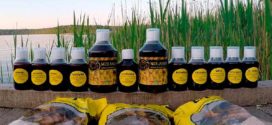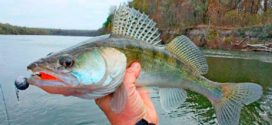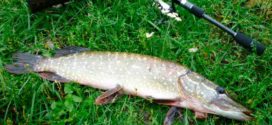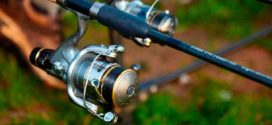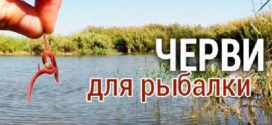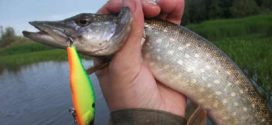Successful fishing is impossible without professional and reliable equipment. To do this, you need to choose the right fishing tackle. Their type and characteristics directly depend on the season, the characteristics of the reservoir and the type of fish that is planned to be caught. Therefore, you need to carefully study all the features and choose the best option for equipment for catching fish.
Content
Spinning rods
Designed for catching predatory fish. Spinning rods consist of several parts, have sufficient flexibility and reliability. Production material: composite, carbon fiber, graphite, fiberglass. Their handles are made of cork or plastic, pre-treated for a better grip.
Typical types of fishing tackle for spinning fishing:
- By weight. Super light, light, medium and heavy. Their mass, respectively, is 7, 15, 40 and over 40 kg.
- Rod length. Varies from 1.3 to 4 m.
- The degree of elasticity or build. Affects bite sensitivity. Rigid fishing tackle is necessary for catching a predator, it bends only 1-3 lengths.
When choosing, you need to consider the methods of fishing. This is usually indicated on the spinning. It is also necessary to choose the right coil for a particular model. The basic parameter is the gear ratio. It indicates how many turns the coil makes in one revolution.
fishing rods
Needed for float fishing. Structurally, they resemble spinning rods, but they differ in their lighter weight and simplicity of shape. Can be used with or without coils. To increase the efficiency of fishing for each type of fishing rod, you need to choose the right equipment: fishing line, float, type of weight and hook.
Common types of fishing rods:
- Bolognese. Size - from 4 to 7 meters, used in fishing with a slow current or in stagnant water. Rigid models are designed for long casts, soft ones respond better to the bite of small fish.
- Flywheels. They differ in minimum weight with a maximum length of up to 8 m. The design does not provide for rings for fishing line, it is also not possible to install a reel. The scope of this fishing equipment is fishing from the hand. Their tooling is replaced quickly due to its simplicity.
- Match. Needed for long casts, characterized by a large mass. Fishing tackle of this type consists of three parts. Feature - the use of sinking fishing line. The maximum length is up to 5.5 m.
When choosing, you need to take into account the rigidity of the rod, the correct selection of fishing line. Telescopic models can be equipped with various types of coils.
Picker
It belongs to a variety of donoks, has a lower test indicator - up to 40 gr. With it, you can fish both with a feeder and with a traditional sinker. Designed for biting small-sized prey. It can be used for catching carp, bleak, bream.
The advantage is the ability to cast in places with a minimum swing for a throw.
Peculiarities:
- casting top dressing - from the hand or with the help of a slingshot;
- the use of small coils;
- mandatory means of installation - props.
The choice of the latter depends on the characteristics of the coastal zone and the number of pickers. Feeders can be made independently. They have a cylindrical shape, are made of wire by weaving or fixing the joints by welding.
Donkey
The most common fishing tackle after floats. The main components are spinning rods of medium hardness and reels for fishing line of the Neva type. You can also use inertialess models, but they have proven themselves worse in conditions of fishing in this way.
How to use this fishing tackle correctly:
- the thickness of the fishing line varies from 0.3 to 0.35 mm;
- equipment used - sinkers of various shapes, feeders, one or more hooks;
- need a stand to install spinning on the coastal strip.
Particular attention should be paid to feeders. The most common option is a mesh form with a weight located at the bottom. Their design involves the installation of a small rocker arm with hook retraction. This is necessary so that the hooks do not get tangled in the net, which helps to better attract potential prey.
Feeders
Needed for catching non-predatory fish. Structurally very similar to the donks described above, the difference lies in the frequency of casting. This should be done every five minutes, regardless of the presence of a bite. Outwardly similar to spinning models, but they have their own classification by class, length, formation.
This tackle has the following features:
- Test selection. Depends on the mass of the feeder - from 60 to 200 gr.
- The length of the rod varies from 3.3 to 4.6 m;
- The coils used are inertialess.
The recommended volume of the spool of the latter is from 3000 to 6000. The installation of a cord or fishing line can be carried out in one of three ways - symmetrical, asymmetrical, inline or Gardner's loop. Type of fish feeder - open, of various shapes. The recommended manufacturing material is plastic. In the latter case, a weight is required.
Zakidushki and mormyshki
These gears are simple and functional. The traditional zakidushka consists of a reel. A fishing line with a diameter of up to 0.9 mm is wound on it. An elastic band is attached to the weight,
Fishing features:
- when biting, the fishing line moves, so a small bell is most often hung to alert;
- need a stand to fix the reel;
- you can cast to depth from the shore or by boat.
The disadvantage of this gear is a high probability of rupture when pulled out. The way out is to attach an additional harness to the weight.
Fishing circle
The name of this tackle comes from the shape of the reel on which the fishing line is wound. She has proven herself well when catching pike, zander or other predatory fish. The material for making the disc is foam or wood. Its diameter is usually 10 cm, thickness - 3 cm. A small sinker is attached to the pin so that the structure is stable on the water surface.
Additional equipment required:
- Leash. You can use regular string.
- Hook. The size (number) and configuration depends on the type of potential production;
- Additional float. It is necessary to determine the location of the circle when it is flooded.
Installation takes place from a boat, it is recommended to find the deepest places in the reservoir to increase the likelihood of a good catch.
The choice of equipment for fishing largely depends on the conditions. It is recommended to bring several options of gear with you.
Hello, I am Alexander, the mastermind behind the blog.
In terms of career and free time, I connected my life with the forest. How else, when you live in Karelia! In this blog, I am responsible for the hunting, hiking and equipment sections. Welcome to my world!
 Survival Lessons Tips for the survivalist, fisherman and hunter
Survival Lessons Tips for the survivalist, fisherman and hunter
